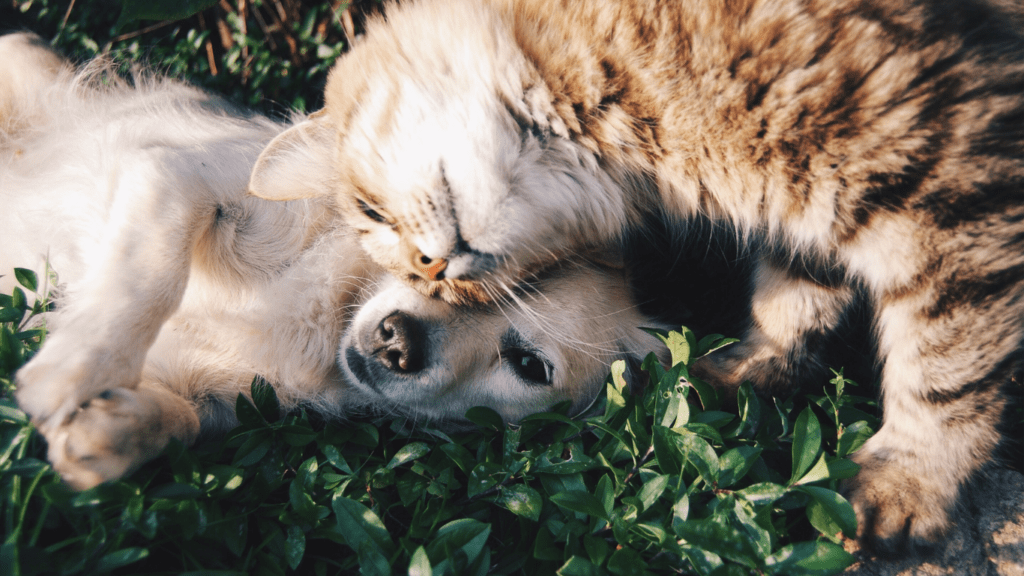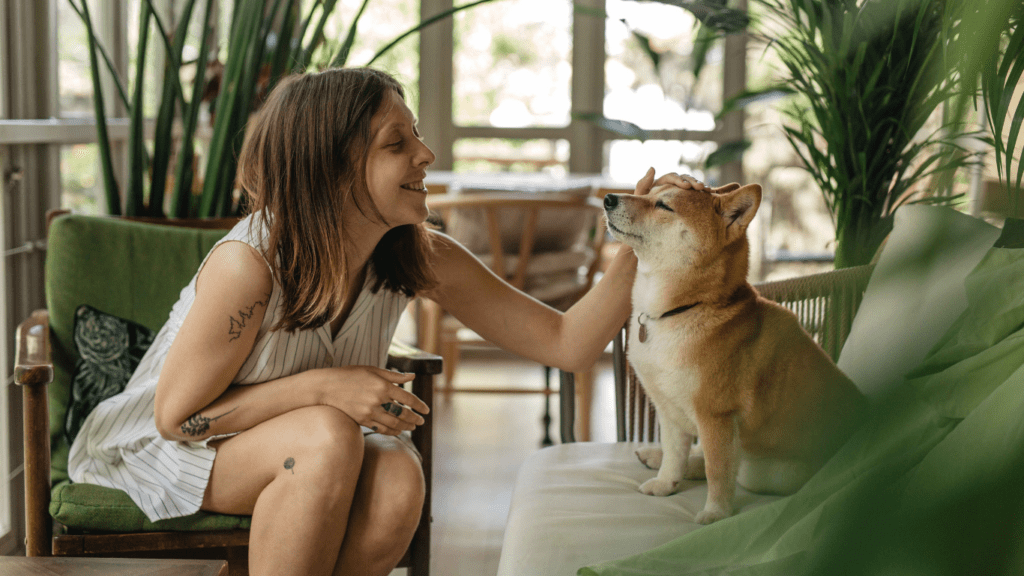The Importance Of Socializing Your Pet
Socializing pets ensures their comprehensive development. Pets gain emotional, mental, and physical benefits from proper social interactions.
Benefits For Your Pet’s Well-Being
Socializing improves a pet’s overall health. Pets involved in regular interactions tend to be less anxious and more confident. This exposure helps them adapt to different environments, reducing stress levels.
Socialized pets show improved mental stimulation. Regular social interactions keep their minds active, preventing boredom-related behaviors like excessive barking or chewing. In social settings, pets exercise more, bolstering their physical health.
Impact On Behavior And Training
Proper socialization fosters good behavior. Pets accustomed to various stimuli are less likely to exhibit aggressive or fearful responses. By familiarizing pets with different people, animals, and settings, owners see more predictable and manageable behavior patterns.
Training becomes easier with well-socialized pets. They tend to be more attentive and responsive to commands during training sessions. Socialized pets are better at following instructions, enhancing their learning process and making them more obedient.
Recognizing Signs Of Poor Socialization
Identifying poor socialization early can prevent long-term issues with your pet’s behavior and well-being. Here are ways to recognize signs your pet might not be adequately socialized:
Common Behavioral Issues
Poorly socialized pets often exhibit specific behavioral problems. They might show aggression towards other animals or unfamiliar people. Fear-driven reactions like cowering or excessive barking are also indicators. These pets may overreact in new environments, displaying nervous pacing, whining, or destructive behaviors. Anxious behaviors, such as excessive licking or scratching, suggest discomfort in social settings.
Physical Symptoms
Physical symptoms can also indicate socialization problems. Stress-related health issues, like frequent diarrhea, vomiting, or excessive shedding, can stem from social anxiety. It might be necessary to consult a vet if these symptoms persist because underlying medical issues could be involved.
By recognizing these signs, you can take steps to improve your pet’s social skills, ensuring a happier, healthier life for them.
How To Begin Socializing Your Pet

Effective socialization begins early and involves gradual exposure to various stimuli. Use controlled settings to ensure positive experiences.
Socialization Stages
Puppies and kittens have critical socialization periods, typically between 3-14 weeks for puppies and 2-7 weeks for kittens. During these stages, they are most receptive to new experiences. I expose puppies to different sounds, sights, and smells during this phase, ensuring they meet various people and other animals. For older pets, a slower approach is necessary. Gradually increase exposure to new situations to avoid overwhelming them. Reinforce positive behavior with treats and praise to create a positive association with socialization activities.
Introduction To New Environments
Introduce pets to new environments slowly. I start with familiar, quiet settings and gradually introduce more complex environments like parks and busy streets. Monitor your pet’s behavior to gauge their comfort level. If they show signs of stress, retreat to a more familiar setting and attempt re-exposure later. Use short sessions to avoid fatigue and always end on a positive note to foster a sense of accomplishment and well-being.
Tips For Successful Socialization
Effective socialization sets the foundation for a well-adjusted pet. Using proven methods ensures your pet thrives in diverse environments and social situations.
Positive Reinforcement Techniques
Reward-based training promotes positive behaviors. Treats, praise, and petting reinforce good actions. For example, when your pet remains calm around strangers, offer a treat immediately. Consistency is key to forming strong behavioral associations. Use treats, playtime, or favorite toys to reward your pet whenever they exhibit calm and friendly behavior around new people or animals. It’s important to keep training sessions short and engaging to maintain your pet’s interest and reduce stress.
Gradual Exposure Strategies
Introduce new stimuli gradually to avoid overwhelming your pet. Start with short, controlled interactions. For example, if socializing a puppy to other dogs, begin with brief, supervised meet-ups. Gradually increase the exposure time as your pet becomes more comfortable. With older pets, pace the interactions slower, allowing them sufficient time to adjust to each new stimulus. This approach minimizes stress and builds confidence, making subsequent exposures more manageable and positive. Ensure each new experience ends on a positive note to reinforce a sense of safety and trust.
These techniques, when applied correctly, result in a well-socialized pet that adapts easily to various situations, enhancing their overall well-being and your relationship with them.
Common Challenges And How To Overcome Them
Socializing pets isn’t always straightforward. Common challenges include managing fear and anxiety and dealing with aggression. Addressing these issues is essential for successful socialization.
Managing Fear And Anxiety
Identifying triggers is the first step. Observe your pet to see what induces fear or anxiety. Common triggers include:
- loud noise
- unfamiliar people
- new environments
Gradual exposure works best. Start by introducing your pet to a mild version of the trigger. If loud noises frighten your dog, play a recording at a low volume first. Gradually increase the volume as your dog shows signs of comfort.
Positive reinforcement enhances progress. Reward your pet with treats or praise whenever they remain calm around the trigger. This method promotes a positive association.
Safe spaces provide comfort. Create a secure area where your pet can retreat if they feel overwhelmed. This could be a crate or a specific room where they feel safe.
Dealing With Aggression
- Identify the root cause. Aggression often stems from fear, insecurity, or territorial behavior. Observe your pet to understand the specific triggers.
- Seek professional help if needed. Consult a veterinarian or a certified animal behaviorist if aggression persists. They can provide tailored advice and strategies.
- Use controlled environments. Conduct socialization exercises in a controlled setting where you can manage potential triggers. This allows for the safe introduction of new stimuli.
- Practice desensitization and counterconditioning. Gradually expose your pet to the trigger and use positive reinforcement to create a non-aggressive association. For example, if your pet is aggressive toward other dogs, introduce them to a calm dog from a distance first.
- Avoid punishment-based training. Punishing aggressive behavior can worsen it. Instead, focus on reward-based training to encourage positive behavior.
- These strategies can help you effectively manage common challenges in socializing your pet and contribute to their happier, healthier social life.


 Veterinary Advisor & Health Expert
Anthony Brooks is the in-house Veterinary Advisor at Pet Paw Shack, offering expert advice on pet health, disease prevention, and general veterinary care. With years of experience as a licensed veterinarian, Anthony helps guide pet owners through essential topics like vaccinations, routine checkups, and emergency care. His commitment to keeping pets healthy ensures that Pet Paw Shack delivers trusted and accurate medical insights.
Veterinary Advisor & Health Expert
Anthony Brooks is the in-house Veterinary Advisor at Pet Paw Shack, offering expert advice on pet health, disease prevention, and general veterinary care. With years of experience as a licensed veterinarian, Anthony helps guide pet owners through essential topics like vaccinations, routine checkups, and emergency care. His commitment to keeping pets healthy ensures that Pet Paw Shack delivers trusted and accurate medical insights.
